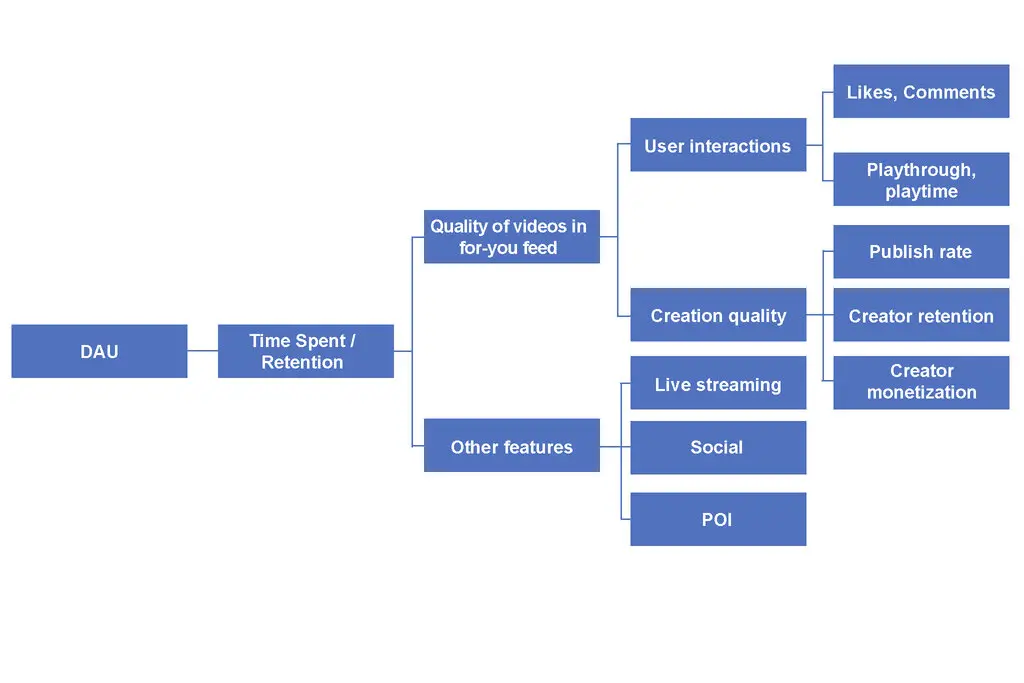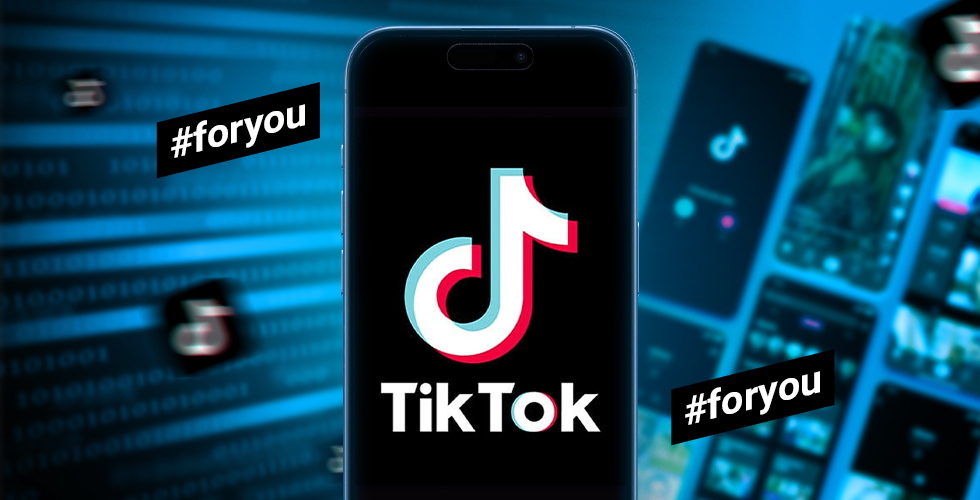TikTok’s powerful recommendation algorithm is so good at serving up videos you want to watch that it seems like it’s reading your mind. It feels almost psychic in how its hyper-personalized “For You” feed seems to know users so intimately.
Headlines claim TikTok “knows you better than you know yourself.” But does it actually detect your inner thoughts and preferences? A close examination suggests the real picture is more complex. TikTok’s algorithm shapes your interests over time to maximize engagement, rather than instantly deducing your true desires.
Unlike other platforms, TikTok’s algorithm only needs one key signal to rapidly decipher a user’s interests. Every second you hesitate or rewatch a video provides important clues for the algorithm. It then leverages that knowledge to serve up engaging, tailored content designed to draw users into “rabbit holes” specific to their preferences.
For marketers, this level of personalization presents both opportunities and risks. TikTok’s algorithm can help ads and branding campaigns feel uncannily relevant. But content can also veer into more extreme niches without human oversight. Understanding how the system works is essential for connecting with users without leading them down harmful rabbit holes.
TikTok’s Perspective on Its Algorithm
TikTok has revealed some general details about how its recommendation system works. It uses factors like likes, comments, captions, sounds, and hashtags to suggest new videos. Outside experts have also tried unraveling the algorithm’s code.
A Wall Street Journal investigation showed TikTok heavily weighs watch time to hook users into endless scrolling. This engagement-driven approach can sometimes guide young viewers into problematic areas like content promoting self-harm. TikTok claims it’s actively removing any videos that break its policies.
Part of TikTok’s success is how easy it makes creating videos, with built-in music and memes. For many users, it’s shockingly accurate at determining their interests and steering them into niche “sides” whether that’s socialism, Excel tips, politics, celebrities, or more.
As evidence of the app’s penetrating insights into people’s inner worlds, there are numerous headlines describing the algorithm’s almost supernatural capacity to understand someone better than they know themselves.
One emblematic article entitled “The TikTok Algorithm Knew My Sexuality Better Than I Did” exemplifies how the platform’s recommendations can provide profoundly revealing reflections of oneself back to the user, bringing subconscious thoughts and feelings to the surface.
These anecdotal accounts speak to the algorithm’s exceptionally precise mapping of the human psyche.
Cracking TikTok’s Recommendation Algorithm
As I already mentioned, TikTok’s For You feed appears almost magical in how it serves up videos aligned with users’ unspoken thoughts and moods. But this doesn’t happen by chance. It’s the result of an incredibly sophisticated recommendation algorithm the company has honed over almost a decade.
To truly grasp TikTok’s algorithm, it helps to understand its origins. TikTok is owned by ByteDance, a Chinese company that previously created an app called Douyin with a similar recommendation system. When ByteDance expanded to other markets, it rebranded Douyin as TikTok. But the powerful algorithm remained the same.
According to a leaked internal document obtained by the New York Times, TikTok’s main goals are to increase “user value,” “long-term user value,” “creator value,” and “platform value.”
Specifically, it tries to optimize for two closely related metrics – “retention” (whether a user returns) and “time spent” (how long they stay on the app). The algorithm aims to keep you watching videos for as long as possible.
The Recommendation Formula
The document reveals TikTok calculates a score for each video based on a formula factoring in:
- Predicted likes – how many likes a video is expected to get, based on machine learning predictions
- Predicted comments – expected number of comments
- Predicted playtime – predicted total playtime if shown to a user
- Played – whether the video was played or not
The basic formula is:
Plike x Vlike + Pcomment x Vcomment + Eplaytime x Vplaytime + Pplay x Vplay
Here, the “P” variables are the predictions, while “V” represents weights adjusting the importance of each prediction. The document states this is “highly simplified” and the real formula is much more complex.

Maximizing Retention and Time Spent
The scores are used to recommend videos to users that maximize “retention” and “time spent” watching videos. The document is very direct that the “ultimate goal” is increasing daily active users through these metrics.
This focus on addictive, time-wasting content over quality or meaning echoes experts like Guillaume Chaslot, founder of Algo Transparency. He argues TikTok’s approach risks harming kids by aiming to get them:
“‘addicted rather than giving them what they really want.”
So TikTok shapes your interests to match engaging content, not vice versa. It maximizes watch time versus showing your true preferences.
Suppressing Repetition and Boredom
Interestingly, TikTok’s algorithm also tries to avoid recommending the same thing repeatedly, which can lead to boredom. The document discusses special factors added to the formula to increase diversity:
- same_author_seen – reduces scores for authors the user has seen recently
- same_tag_today – lowers scores for videos with tags/topics viewed already that day
Other tactics like forced inclusion of different content in users’ feeds and spreading videos out over time also increase variety.
TikTok Shapes Interests Over Time
Crucially, unlike mind reading, TikTok’s algorithm doesn’t instantly know your inner thoughts and preferences when you join. It makes predictions based on limited initial information – your reactions to some videos.
For example, when a new user first opens TikTok, they may be shown a variety of popular videos from different categories like comedy, animals, food, dance, etc. Based on how much time the user spends watching certain videos, and which ones they like or comment on, TikTok starts to gather signals about their interests.
If the user lingers while watching comedy sketches, quickly clicks away from dance videos, and likes lots of cooking videos, TikTok will begin tailoring recommendations to show more comedy and cooking content, and fewer dance videos.
Over time, as the user engages with more videos, TikTok’s algorithm continually refines its understanding of their preferences. It evaluates their ongoing behavior – analyzing metrics like watch time, likes, shares, comments, etc. to steer recommendations.
Each new data point provides additional signals to improve predictions of what kinds of videos will keep that specific user engaged. For instance, if the user starts watching videos about fancy dessert recipes and gourmet cooking, TikTok can shift to showcase more of that type of food content.
According to Professor Julian McAuley of UC San Diego, TikTok combines these behavioral signals with sophisticated machine learning algorithms applied across massive volumes of user data. This allows the system to model individual interests more and more accurately.
But critically, TikTok’s goal is maximizing engagement and watch time, not necessarily showing content aligned with someone’s genuine interests or desires. It optimizes to keep users hooked based on addiction-like behavior, rather than recommending what they would intrinsically choose themselves.
TikTok Reinforces Existing Trends More Than Personal Interests
TikTok tends to reinforce mainstream trends and viral hits rather than catering to audience niches or obscure personal interests.
One study found the number of TikTok likes and views for a video are very highly correlated. Popular videos rapidly get more views, likes, and comments – regardless of personal preferences.
Factors, such as a creator already being popular, have an outsized impact on a video’s success. Personalization appears limited. As media analyst, Tiernan Ray concludes:
“TikTok plays a greater role in creating mentalities than reading minds.”
Its algorithm detects what’s already resonant and amplifies it, more than satisfying individual users.
Attaining Virality on TikTok
A detailed study published this year analyzed factors that make TikTok videos go viral. It found attributes like:
- The popularity of the creator
- Use of close-up shots
- Display of products
- High energy and facial expressions
Were key viral success factors. But notably, TikTok’s recommendation algorithm itself had minimal impact on virality. Simply being recommended on TikTok does not make a video go viral.
This study suggests virality occurs due to collective user behavior and video attributes, not hyper-personalized recommendations.
Does TikTok Censor Sensitive Topics?
There are also concerns TikTok suppresses political speech or censors topics sensitive to the Chinese government.
Investigations by organizations like Citizen Lab have found limited evidence of censorship so far, though TikTok did initially censor some material on oppressed Muslim minorities in China.
Some point out that censoring or propaganda risks exist but are hardly unique to TikTok. All social media platforms moderate content, and the Chinese government could potentially buy data from any platform.
According to TikTok, user data has never been provided to the Chinese government. However, that does not imply that TikTok isn’t closely intertwined with its Chinese parent company ByteDance, despite past controversies.
ByteDance’s ownership of TikTok became a major issue late in Donald Trump’s presidency in 2020. At that time, Trump tried to force TikTok to sell itself to an American company called Oracle that was aligned with his administration.
So, What Makes TikTok’s Algorithm So Uniquely Effective?
Based on all the technical analysis and evidence, we can highlight the following key points:
- It requires very little user data – Unlike platforms like Facebook or Instagram that rely heavily on personal data like age, gender, and location, TikTok needs minimal inputs to figure someone out.
- Watch time is the critical signal – While TikTok does factor in likes, comments, and more, its algorithm hones in on one particularly telling piece of information – watch time, especially rewatches and hesitations.
- Highly responsive recommendations – Based on those watch time signals, TikTok serves up new recommendations rapidly, allowing it to zero in on niche interests quickly.
- Powerful ranking system – Fresh videos don’t just appear randomly. They are ranked and prioritized based on predicted engagement. This system gives the algorithm great influence over what users see.
- Customized iterations – TikTok tailors its algorithm’s updates and refinements specifically for each market. So TikTok’s system in the US improves based on US user data.
This unique approach allows TikTok to jumpstart its understanding of new users quickly, then use that knowledge to draw them deeper into the app.
Next, let’s look at some experiments that reveal just how rapidly TikTok can figure someone out.
The Rabbit Hole Effect in Action
To fully test the capabilities of TikTok’s algorithm, the Wall Street Journal created over 100 bot accounts that watched hundreds of thousands of videos on the platform.
The accounts were assigned interests, but these were never directly entered into TikTok. The only information the bots provided was through their video watch time – lingering on certain clips or rewatching others.
The results were stunning. Here are a few key findings:
- Interests learned in minutes – For many bot accounts, TikTok had their interests figured out in less than 40 minutes. Others took less than two hours before their feeds became personalized.
- Immediate niche communities – Based on interests like astrology or politics, bots were instantly recommended niche content and communities. There was no general onboarding period.
- Rapid rabbit holes – Watching a few videos about depression or ADHD sent bots down rabbit holes where over 90% of recommendations were on those topics.
- Refining interests – When bots changed their watch behavior, recommendations adapted quickly. This shows TikTok continually optimizes its understanding.
- Exposure to fringe content – In niche communities, bots saw more unmoderated videos with extremist or dangerous content, especially down conspiracy theory rabbit holes.
The implications of these findings are very significant. They demonstrate TikTok wastes no time figuring out users’ interests and vulnerabilities, then leveraging that knowledge to siphon them into personalized rabbit holes.
This keeps users glued to the app, but it can also isolate them in potentially unhealthy ways.
Why TikTok’s Algorithm Is So Powerful
After examining TikTok’s algorithm in action, the reasons for its uncanny precision become clearer.
Here are some key reasons it’s able to so quickly draw users down personalized rabbit holes:
- Hyper-charged engagement focus – Unlike YouTube, 90-95% of TikTok’s videos are recommended, not searched for. This huge reliance on the algorithm means maximizing watch time and engagement is prioritized above all.
- Rapid optimization loop – Because users typically watch dozens of TikTok videos per session, the algorithm can quickly learn from those signals and update recommendations in real time.
- Addictive video formulas – Sounds, editing, humor, and more are refined to keep people drawn in. The algorithm detects what sticks and promotes similar content. The content you see is not necessarily what you prefer or enjoy the most. It’s just the content that’s designed to keep you hooked on the platform.
- Curated mainstream – Popular content is vetted for new users. But once interests are determined, mainstream videos get swapped for niche content optimized for rabbit holing.
- Vulnerability detection – The algorithm determines not just what you like, but what you’re susceptible to, serving content designed to provoke reactions and stir emotions.
- Limited moderation – With such a vast firehose of videos, human moderation falls short, especially in esoteric niches. So questionable content can spread rapidly.
- Addictive never-ending feed – TikTok is designed for endless scrolling. There are no cues to stop watching. Once down a rabbit hole, exiting can require great willpower.
For brands and marketers, this level of algorithmic mastery presents opportunities as well as dangers. Next, we’ll explore the implications of TikTok’s addictively personalized experience.
Implications for Marketers for Content Creation
For marketers, TikTok remains a highly appealing platform to reach younger audiences. But its algorithm implies certain best practices:
- Leverage Popular Trends – Tying into current viral memes, songs, or creators boosts reach dramatically. Unique content has a harder time breaking through.
- Maximize Addictive Qualities – Videos that instantly hook users and keep them watching perform the best. Quick cuts, emotional content, and cliffhangers are helpful.
- Use Eye-catching Aesthetics – Cool effects, attractive people, and encode trig visuals are essential. The first few seconds are critical to keep people from scrolling past your video.
- Target Mainstream Interests – Mass reach on TikTok depends on tapping into mainstream trends and interests. Niche or “long tail” content likely won’t spread far.
- Encourage Engagement – Driving likes, comments, and shares boost future reach. Asking viewers to tag friends or try a challenge helps.
Succeeding with TikTok’s algorithm requires an approach focused on instant gratification, sensory stimulation, and mainstream appeal more than deep personalization or appeal to obscure interests. The platform’s priorities dictate what performs best.
While TikTok does not exactly read individual minds, it’s become masterful at predicting what kinds of content will stimulate mass engagement. Brands that learn to create within these constraints can gain tremendous reach with younger audiences.
But it requires aligning your approach with the attitudes and interests the platform itself cultivates in its audience over time.
What TikTok’s Algorithm Means for Advertisers
TikTok’s sophisticated algorithm has obvious appeal for brands and marketers. It provides tools to reach exactly the right audiences with tailored creative in a highly engaging environment.
But there are also risks to weigh regarding the nature of TikTok’s personalized rabbit holes. Here are some key considerations for marketers exploring TikTok:
The Opportunities
Hyper-targeted ads – Using interests, watch data and more, ads can be tuned to specific user needs and mindsets for maximum relevance.
Persona-based funnels – Different creatives can be designed to move different personas through the marketing funnel based on their interests and behavior patterns.
Powerful social lift – Getting content to trend on TikTok can create a viral social lift unlike any other platform. The algorithm quickly surfaces hot content.
Authenticity appeal – Native, “behind the scenes” brand content tends to perform well, owing to TikTok’s more authentic vibe vs Instagram and Facebook.
Influencer goldmine – TikTok’s roster of popular creators opens opportunities for sponsorships and collaborations tailored to niche audiences.
The Risks
Extreme niche content – Brand associations with potentially offensive or dangerous fringe content could be damaging. Tighter content moderation is needed.
Algorithmic radicalization – Accounts focused on sensitive topics like politics, health, and more can be steered toward increasingly extreme misinformation.
Echo chamber problems – Catering to people’s existing biases can fuel polarization and discourage open-mindedness. Diversifying recommendations could help alleviate this.
Moderating scale challenges – With over a billion users, policing problematic individual videos presents massive challenges, requiring viral videos to receive swifter scrutiny.
Youth vulnerabilities – Stricter age screening and parental controls are needed to protect minors from inappropriate or adult content.
The key for brands will be finding the right balance – benefiting from the highly personalized, engaging nature of TikTok while avoiding dangerous rabbit holes and fringe elements. Maintaining this balance is a shared responsibility between brands, TikTok, and users.
Best Practices For Marketers on TikTok
For marketers new to TikTok, the platform offers fantastic opportunities but also some real risks to navigate.
Here are some best practices brands should keep in mind:
- Vet ambassadors carefully – Any influencers or creators associated with a brand must align with its values. Look beyond view counts to assess content quality.
- Promote dialectic thinking – Rather than echoing fringe views, strive to encourage open-mindedness. Bring people together across aisles.
- Focus locally – TikTok tailors feeds based on location. Local and community-focused content tends to engage users.
- Stay on brand – While having a relaxed, behind-the-scenes vibe works, maintain your core brand voice and values. Don’t try to mimic every viral trend.
- Protect young audiences – Be thoughtful about blocking minors from content intended for adult audiences. Also, avoid marketing tactics designed to addict youth.
- Stay vigilant – Keep monitoring the conversation and your brand’s presence. Rapid response is crucial for controversial issues.
- Leverage TikTok controls – Use tools like age-gating, geofencing, and sensitivity screens to ensure brand safety and align with platform policies.
- Mix moderation methods – Relying solely on either AI or human moderators has weaknesses. A blended model provides stronger oversight.
While mastering TikTok requires an investment, the potential benefits of tapping into its addictively personalized algorithm make it a worthwhile endeavor for brands. Just remember – with great algorithmic power comes great responsibility.
The Takeaway: Awareness Is Key
At the end of the day, TikTok’s algorithm provides users with an unmatched level of curation. It learns our unspoken interests shockingly fast, then serves up tailored content designed to keep us engaged.
But the same tools subtly influencing our experiences can also isolate users in problematic filter bubbles. Plus the sheer scale of content makes adequate moderation an uphill battle.
That’s why awareness is so important. Tuning into how the TikTok algorithm guides your For You page highlights areas for improvement.
For example, if you’re consuming lots of sorrowful content and need a change, actively seek more positive videos. Or if you notice you’ve gone down a conspiracy theory rabbit hole, make efforts to expose yourself to additional perspectives.
For brands, success requires understanding TikTok’s algorithmic influence, then leveraging that power responsibly to create engaging, safe experiences that bring people together, not push them apart.
Ultimately, our awareness of how algorithms shape our world is key to maintaining both our sanity and humanity.
So next time you open TikTok, pause for a moment. Observe how the algorithm responds to the content you watch. Then rather than letting it unconsciously pull your strings, take back control and steer it in a more positive direction.
Examining the Role of Artificial Intelligence
While TikTok’s recommendation algorithm appears almost psychic at times, artificial intelligence is still not actually capable of reading minds or intentions. The system uses machine learning techniques to optimize for certain goals like engagement, but cannot directly perceive a user’s thoughts.
At its core, TikTok’s algorithm is analyzing behavioral data – how long people watch certain videos, what they tap on, comment on, or share. It looks for patterns across millions of users to predict what kinds of content will be most engaging.
But it does not have direct access to anyone’s inner beliefs, emotions, or imagination. AI is an optimization tool, not a mind reader. Understanding its limitations is important.
The Importance of Human Oversight
Automated systems like TikTok’s algorithm can provide immense value in surfacing relevant content and trends. But the risks of polarization, radicalization, and limited diversity show the need for meaningful human oversight as well.
Relying too heavily on AI curation in social platforms can isolate users in dangerous echo chambers. Promoting open-mindedness and exchanges of ideas requires a more thoughtful, holistic approach to curation that blends human insight with AI efficiency.
Moderators, user feedback, and responsible policies must work alongside automated tools to foster the best outcomes for society. AI on its own lacks the wisdom and ethics needed for such nuanced guidance.
Fostering Healthy Digital Habits
Responsible algorithm use is a two-way street. Users also need awareness to develop healthy digital habits. Mindlessly consuming endless personalized content promotes addiction-like behaviors.
Setting limits, varying sources of information, consciously seeking alternate perspectives, and taking breaks can all counteract the excesses of algorithmic feeds. A degree of intentional serendipity where encounters are not pre-filtered builds understanding.
While powerful recommendation algorithms won’t disappear, users can step out of passive consumption modes through simple habitual changes. Discovering the joy of creation can also be transformational.
TikTok relies on remarkable algorithmic capabilities, but true wisdom requires human consciousness. With care, creativity, and compassion, digital tools can enlighten our minds, not simply consume them.




